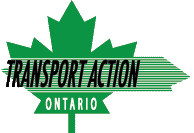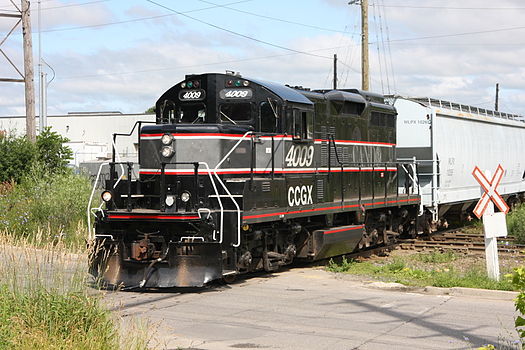By
Transport Action Ontario
|
Community Transit ,
Intercity Rail and Bus ,
Latest News
Post by Adam Mills, Director, Transport Action Canada
Region of Waterloo transportation planning staff has been consulting with the public on the Region-proposed Cambridge GO expansion initial business case that is being developed and will be released in June, 2024.
The initial business case (or IBC) is the latest step made by the Region in advocating for a heavy rail expansion into Cambridge, and follows Metrolinx’s IBC framework. Planning staff were joined by their consultant Hatch, whose team is notably led by Mark Sutherland who developed the framework during his time at Metrolinx.
The IBC contains a further narrowing of ideal options, including the removal of double-tracking in favour of the more attainable and cost-effective plan of passing loops. This would mean frequencies of up to 20-30 minutes, with a travel time of 15 minutes. It is hard to see how this might not be able to be exploited to achieve 15 minute frequency in the future. Planners also noted that trackage and therefore frequency could be expanded in the future with relative ease.
The proposed service would still run between Guelph and Cambridge with a timed connection to the Kitchener line.
A positive revelation from the presentations is that CN seems to be open to the plan, and will not be a roadblock to the development of rail service between the two cities.
Station Location
Another narrowed option, one that seems to limit the possibility of future expansion, is the selection of Pinebush ION station as the Cambridge station location. The reasoning is clear: Pinebush GO provides for more transit oriented development opportunity compared to the other ION accessible station location at Delta station in downtown Galt. The options were presented in the 2022 phase 2 feasibility study, whose results were endorsed by council when received.
There are a few concerns that should be addressed when it comes to the station’s location. The prospect of future expansion was not considered in the 2022 study. Many questions were asked of the planners about how a dead-end station at Pinebush would allow for future rail expansions in Southern Ontario such as connections to Paris and Brantford, and even directly to Hamilton along the Highway 8 corridor. So far there don’t appear to be any answers. As this is an initial business case, options presented should not be overly limited. Perhaps if local politicians were told that the reason why transit can’t better serve a neighbourhood is because of aversion to development, they may be more open to support development in existing neighbourhoods and create more vibrant downtown areas that are easily served by regional transit. One could easily see how Metrolinx or the provincial government could give support to the project in exchange for allowed development changes in places asking for transit expansion.
Start with Buses
Another popular question at the 3 meetings was about what the Region is doing to secure a transit link of any sort between Cambridge and Guelph seeing as none exist currently. Planning staff indicated that it hadn’t really occurred to them in the planning of the project, but that a bus link in the meantime makes sense. Staff also said that the Region would approach Metrolinx to establish a bus service, and barring that, would be open to working with Guelph or even solo to ensure a link between the cities. Demand analyses conducted during the development of the project has shown that Cambridge-Guelph bus service would have healthy ridership.
The lack of consideration of bus options betrays an all-too-common rail and infrastructure bias that many of us are guilty of. Expanding mass transit is more than just new rail lines, it also includes expanding bus services across the province, the ridership of which can inform future needs and opportunities for higher-capacity forms of transit like regional rail. Many transportation planners suggest this ‘service first’ approach to transit development. One good example is the Kitchener-Toronto GO bus service which has helped to create large demand for Kitchener line expansion. It can be hard to justify a rail line when there is not already a transit service along the route.
Rolling Stock
The options for what might run along the new line aren’t limited at all, with planners preferring battery electric multiple units (BEMUs), but also noting the diesel multiple units (DMUs) or even standard GO bi-level cars would be possible for the service. Planners did note the desire for smaller trainsets to limit the cost of any new stations. The plan presented at the Guelph and virtual meetings suggested that maintenance would be done at Willowbrook yard in Etobicoke meaning any rolling stock would have to be able to make the journey down the Kitchener line for maintenance. At the third meeting, attendees noted that a planner said a maintenance facility along the line would be considered.
In a future ideal world, a one-seat ride would be enabled through a rolling stock option that can connect to Toronto-bound trains at Guelph providing a seamless Cambridge-Toronto trip. One can dream right?
Cost
A troubling part of this new advancement is the escalation of costs. Since the last study in 2022, projected costs for each option have ballooned by an average of 200%. The project planners were reluctant to make any statement regarding costs and did not directly address any questions regarding what has or could be done to limit costs and increase the possibility of the project being built.
Conclusion
While this effort is a hopeful attempt at advocacy by the Region, and contains some best practices such as EMUs and strategic infrastructure investments, the cost, limitations to future expansion (caused in part by the lack of densification in Cambridge), and lack of a pre-existing transit connection all could lead to reasons why Metrolinx and the province might not choose to fund this project. These are all concerns that can be addressed by Cambridge and the Region of Waterloo. What is clear is that more pressure on local politicians is needed. The plan needs support from Cambridge city council and the local MPPs who both happen to be in the PC caucus but have been absent on any Cambridge GO advocacy.
The consultation presentations are attached to this post.
A Region of Waterloo survey is open until April 5th






